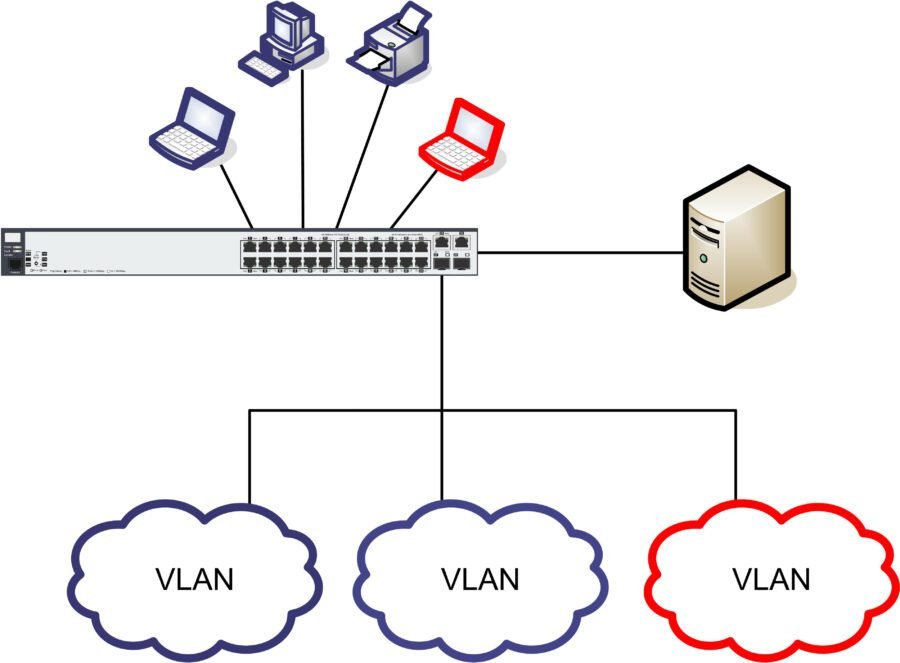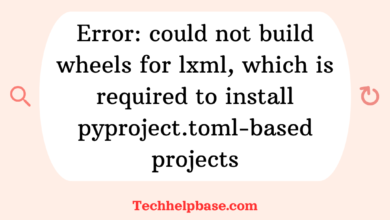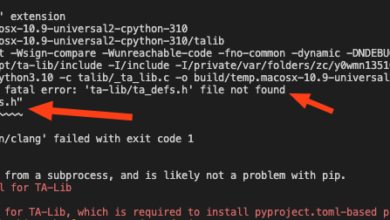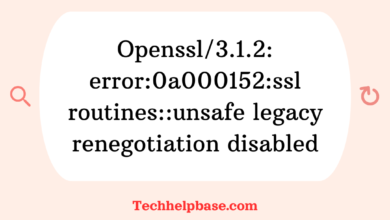VLANs Based on __________ Are Called Dynamic VLANs, Although They Are Never Used These Days

Dynamic VLANs, once a promising concept in network segmentation, have gradually fallen out of use in modern network configurations. VLANs (Virtual Local Area Networks) are a crucial part of networking that allows devices to communicate as if they were on the same local network, even when physically separated. However, the use of dynamic VLANs based on __________ has become increasingly rare due to their complexity and limited practical benefits in today’s network environments.
In this article, we will delve into the nature of dynamic VLANs, explain the challenges they pose, and explore the reasons behind their decline. We’ll also provide a step-by-step guide to troubleshooting common VLAN-related issues and offer tips to avoid similar problems in the future. Our goal is to simplify the technical jargon surrounding this topic and make it accessible for network administrators and IT professionals.
What Are Dynamic VLANs?
Dynamic VLANs are VLANs where devices are assigned to a VLAN automatically, based on specific criteria such as MAC addresses, IP addresses, or even user credentials. The idea behind dynamic VLANs was to simplify network management, especially in large-scale environments, by automating the process of VLAN assignment. VLANs based on __________ are called dynamic VLANs, although they are never used these days due to various challenges, such as complex configuration and lack of flexibility.
The key distinction between dynamic VLANs and static VLANs is that, in the static approach, devices are manually assigned to a specific VLAN based on the port they are connected to. This manual configuration remains far more common today, as it offers greater control and reliability.
Why Dynamic VLANs Have Fallen Out of Use
There are several reasons why VLANs based on __________ are called dynamic VLANs, although they are never used these days:
- Complexity: Dynamic VLANs are often considered difficult to configure and maintain. The process of assigning devices to VLANs based on complex criteria can introduce errors, especially in large networks where numerous devices need to be managed.
- Security Risks: Dynamic VLANs can pose security risks. Since the assignment is based on device or user criteria, vulnerabilities can arise if these criteria are manipulated or compromised.
- Lack of Flexibility: Dynamic VLANs are less adaptable to changing network requirements. Static VLANs, on the other hand, provide better control and flexibility, making them the preferred choice for most network administrators.
- Limited Vendor Support: Many network hardware vendors have shifted focus away from dynamic VLANs, offering limited support for this feature. As a result, network professionals are less likely to adopt it in modern deployments.
- Administrative Overhead: The automation behind dynamic VLANs can seem like a benefit, but in reality, it often adds more overhead, requiring constant monitoring and adjustments.
Given these challenges, VLANs based on __________ are called dynamic VLANs, although they are never used these days in most enterprise environments, which prefer static VLANs for their simplicity and control.
Common Problems Related to VLANs
Even though dynamic VLANs are not frequently used today, VLAN-related problems can still arise in network configurations. Here are some common issues users might encounter:
- Misconfigured VLAN Trunks: A trunk allows VLAN traffic to pass between switches. If a VLAN trunk is misconfigured, devices may not communicate across VLANs as expected.
- Incorrect VLAN Assignment: When devices are assigned to the wrong VLAN, either dynamically or statically, they may fail to connect to the correct network resources.
- IP Address Conflicts: IP address conflicts can arise if devices are not assigned to the correct VLAN, especially in dynamic VLAN environments where the wrong address pools may be used.
- Network Segmentation Issues: VLANs are used to segment networks, but if segmentation is not properly implemented, traffic may bleed between VLANs, causing performance degradation or security issues.
Troubleshooting VLAN Issues
If you’re facing VLAN-related issues, whether they involve dynamic or static configurations, the following step-by-step troubleshooting guide can help:
Step 1: Verify VLAN Configuration
Check your switch’s VLAN configuration using the command-line interface (CLI). Make sure that the VLANs are correctly defined and that devices are assigned to the right VLAN.
- For Cisco devices, use the command:sqlКопировать код
show vlan briefThis will display the VLANs configured on the switch and their associated ports.
Step 2: Ensure Trunk Ports Are Correctly Configured
Trunk ports allow VLAN traffic to pass between switches. If they are not properly configured, VLANs will not function as expected.
- Use the following command to verify trunk configuration on Cisco switches:sqlКопировать код
show interfaces trunkThis will show which VLANs are allowed to pass through the trunk.
Step 3: Check Device-to-VLAN Mapping
If you’re using dynamic VLANs (though this is unlikely in most modern setups), ensure that your device-to-VLAN mapping is correct. Devices must meet the criteria specified in the dynamic VLAN configuration to be placed in the right VLAN.
Step 4: Check IP Address Assignments
Verify that devices in each VLAN are receiving the correct IP address range. DHCP issues can cause IP conflicts, preventing devices from connecting to the network properly.
Step 5: Use a Packet Sniffer for Debugging
If the problem persists, use a packet sniffer like Wireshark to examine the traffic flowing through your VLANs. This can help identify whether traffic is being routed incorrectly or dropped.
Real-World Example: VLAN Configuration Gone Wrong
A common issue discussed on online forums involves network administrators misconfiguring VLAN trunks, leading to VLANs not passing traffic between switches. One user reported that their devices in different VLANs could not communicate after they attempted to implement a dynamic VLAN system. After hours of troubleshooting, they discovered that a trunk misconfiguration prevented the VLAN traffic from flowing between switches. Once the trunk was correctly set up, the issue was resolved, highlighting the importance of verifying each step of VLAN configuration.
Tips for Preventing VLAN Issues
To avoid VLAN problems in the future, consider the following best practices:
- Use Static VLANs: For most environments, static VLANs offer greater control and reliability compared to dynamic VLANs. Stick to static configurations unless there is a specific reason to use dynamic VLANs.
- Keep Configurations Simple: Overcomplicating VLAN setups with unnecessary dynamic rules can lead to misconfigurations. Simplicity is often the key to maintaining a stable network.
- Document VLAN Assignments: Maintain detailed documentation of your VLAN assignments, including the IP ranges associated with each VLAN. This will help prevent errors when making changes or troubleshooting.
- Monitor VLAN Traffic: Use network monitoring tools to keep an eye on VLAN traffic and identify any issues early. Proactively monitoring can prevent problems before they impact network performance.
- Regularly Update Switch Firmware: Ensure that your network switches and routers are running the latest firmware to take advantage of security patches and stability improvements.
Conclusion
Dynamic VLANs, although once seen as a revolutionary concept, have largely fallen out of use due to their complexity, security concerns, and the rise of more flexible and reliable static VLAN configurations. VLANs based on __________ are called dynamic VLANs, although they are never used these days for these reasons, with most administrators opting for static VLANs in their network designs.




